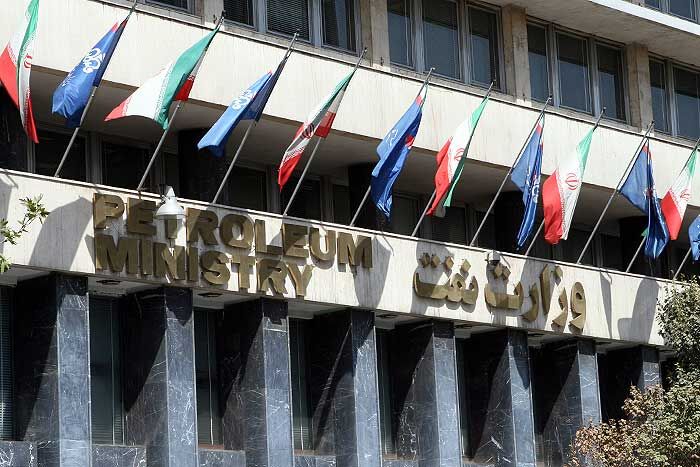According to a series of new reports evaluating the performance of government agencies in executing the Seventh Development Plan, the Research Center found that the Oil Ministry delivered an impressive record in the energy sector during the first year of implementation.
The center noted that the ministry’s responsibilities under the plan are mainly structured around three pillars: “increasing production,” “optimizing consumption,” and “expanding oil and gas trade.” While the law defines overall quantitative goals for the end of the five-year period, the High Council for Program Governance also set annual benchmarks to enable continuous performance monitoring.
Oil and Gas Output Surpasses Targets
The report shows that in the Iranian year 1403, the ministry outperformed most targets in the oil and gas sector. Iran’s sustainable crude oil production capacity rose from about 4.06 million barrels per day in 1402 to 4.152 million barrels in 2024, surpassing the 4.1 million-barrel target — a 129% achievement rate.
Actual crude oil production reached more than 3.954 million barrels per day, exceeding the 3.9 million-barrel goal and achieving 107% of the target. Raw gas production also rose from 1.02 billion cubic meters in 1402 to over 1.097 billion cubic meters in 1403, achieving 151% of the plan’s first-year target of 1.051 billion cubic meters.
The ministry also recorded strong results in gasoline and diesel production and in improving the quality of petroleum products. Although targets in shared field development and condensate production were not fully met, output in these areas still showed solid growth.
460% Surge in Flare Gas Recovery
The standout achievement was a 460% increase in gas flaring recovery. In 2023, Iran recovered about 1.1 billion cubic meters of flare gas. The plan had called for a 36% rise to 1.5 billion cubic meters in 1403, but the ministry far exceeded expectations, recovering 3.3 billion cubic meters through multiple projects.
This achievement, equivalent to saving 63,000 barrels of crude oil per day in energy use, represents 25% of the plan’s final five-year target. Recently, 12 new flare gas recovery contracts were signed between the Oil Ministry and private companies in southern oilfields, a move officials said would help reduce air pollution, protect the environment, and improve energy balance while generating substantial economic benefits.
Energy Efficiency and Data Gaps
The report noted a lack of quantitative data in energy efficiency across transport, buildings, industry, and agriculture. Nonetheless, the Oil Ministry met its own obligations in this area through flare gas collection projects. The Research Center attributed data gaps to the absence of an operational Energy Optimization and Strategic Management Organization, which has limited inter-agency coordination.
28% of Gas Trade Target Achieved
Under Article 44 of the Seventh Development Plan, Iran aims to reach 60 billion cubic meters in total gas trade by 1407 — 40 billion for exports and 20 billion for imports — as well as 200,000 barrels per day in oil and product swaps. The report found that gas trade reached 17 billion cubic meters in 1403, equivalent to 28% of the five-year target.
The Research Center recommended further action to expand gas exports by optimizing domestic consumption and leveraging surplus supplies from Russia and Turkmenistan to strengthen Iran’s position in regional energy trade.
Oil Minister Mohsen Paknejad told Parliament that crude oil and condensate exports also showed a “promising” upward trend in the first half of 2025 compared to the same period last year.
Progress on Other Mandates
The Research Center reported that under Article 14(b), at least 60% of revenues from domestic and export sales of byproducts — including ethane, propane, butane, pentane, sulfur, and gas liquids — must be deposited in the National Oil and Gas Investment Fund. In 2024, the Oil Ministry achieved a 50% compliance rate.
Paknejad explained that all deposits to the fund were allocated to oil industry projects, but the amounts remain insufficient due to deductions made by tax and subsidy organizations before the funds were transferred, totaling about 51 trillion rials.
The report also cited progress on joint field cooperation agreements with Oman and Iraq, calling for faster finalization. It urged acceleration in gas storage projects and the rollout of a national smart energy management system. Current gas withdrawal capacity from storage sites in cold seasons is 30 million cubic meters per day, projected to rise to 55 million by the end of the third year of the plan.
Financing Remains the Key Challenge
Despite the Oil Ministry’s strong performance, the report stressed that only 22% of the required funding for the plan’s objectives has been secured. Of the $27 billion anticipated for the first year, just $5.5 billion was provided. According to the minister, achieving all targets under the Seventh Development Plan will require about $190 billion in total investment.
The Research Center concluded that while Iran’s oil and gas production levels are appropriate relative to national reserves, population, and industrial capacity, consumption indicators remain below global standards.


Your Comment